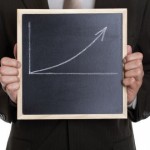 According to data released by the U.S. Bureau of Labor Statistics (BLS) last Friday, the unemployment rate stood at 6.7% in March, which is similar to the unemployment rate in February. A total of 192,000 jobs were added, of which food and drinking places added more than 30,000 and “temporary” help services in the professional and business industry added more than 29,000 jobs. The labor market fell slightly short of expectations as analysts had forecasted the unemployment rate to be 6.6% for March. (Source: “The Employment Situation — March 2014,” Bureau of Labor Statistics web site, April 4, 2014.)
According to data released by the U.S. Bureau of Labor Statistics (BLS) last Friday, the unemployment rate stood at 6.7% in March, which is similar to the unemployment rate in February. A total of 192,000 jobs were added, of which food and drinking places added more than 30,000 and “temporary” help services in the professional and business industry added more than 29,000 jobs. The labor market fell slightly short of expectations as analysts had forecasted the unemployment rate to be 6.6% for March. (Source: “The Employment Situation — March 2014,” Bureau of Labor Statistics web site, April 4, 2014.)
The Fed announced it would start to scale back its monetary stimulus last December, after jobs numbers started to show signs of a recovering economy. The unemployment rate initially dropped, only to settle at levels that have remained unchanged for the greater part of the winter season. Simultaneously, initial jobless claims increased by 5.16% during the week ended March 28, 2014, raising eyebrows toward the ability of the Fed’s policies to carry the string of economic recovery further. (Source: Federal Reserve Bank of St. Louis web site, last accessed April 7, 2014.)
While most economic challenges faced by the Fed for the last four months have been blamed on cold weather, a rigid unemployment rate and increasing jobless claims point towards a weaker-than-expected recovery. Amidst this, the Fed chair, Janet Yellen, while speaking at a press conference on March 19, confirmed that the Fed plans to go ahead with the tapering program in its bid to elevate interest rates up from their near-zero levels. (Source: Risen, T., “Janet Yellen Continues Tapering in Fed Chair Debut,” U.S. News web site, March 19, 2014.)
Now, what implications can an impending hike in interest rates have?
A possible increase in interest rates would reduce total investment in the economy and push up the endangered U.S. dollar. Although most economic analysts don’t see such an increase happening before the start of 2015, higher rates can put the brakes on the bull market run in the key stock indices.
The reduction in total investment will not bode well for existing portfolios largely invested in capital-intensive stocks and individual investors who are long on gold and key stock indices, such as the S&P 500. Investors should look to take profits off the table from high-yielding momentum stocks and exchange-traded funds (ETFs) that follow gold once a final confirmation is issued from the Fed that it is going ahead with the interest rate hike.
In the meantime, investors can look for cyclical stocks—companies that follow trends in the overall economy. Although the unemployment rate and jobless claims aren’t indicating a healthy economy, the addition of 192,000 jobs is being taken as a positive. Since cyclical stocks increase in value as the economy gains strength, they will be the sought-after investment until interest rates rise.
And once the Fed increases interest rates in 2015, the economy might undergo a major correction. Unemployment rates could soar, owing to lower investments as year-over-year inflation rates edge back to their pre-taper levels, hovering around one percent, which is much lower than the Fed’s target rate of two percent.
This should be a perfect time to look for ETFs that follow the U.S. dollar, since it could appreciate against gold and international currencies. Investors may consider the PowerShares DB US Dollar Index Bullish (NYSEArca/UUP) ETF, then, to maximize gains from a strengthening U.S. dollar.
by guest columnist, Asad Butt, BA